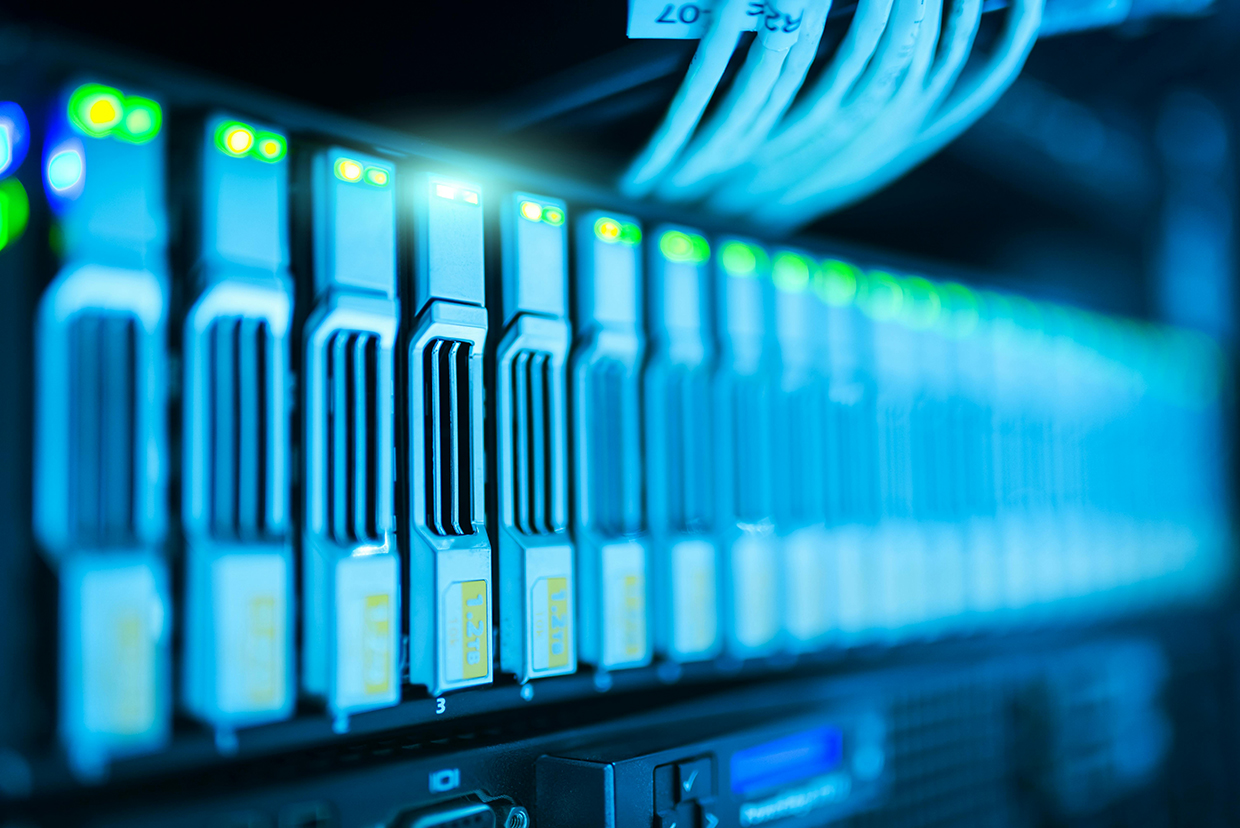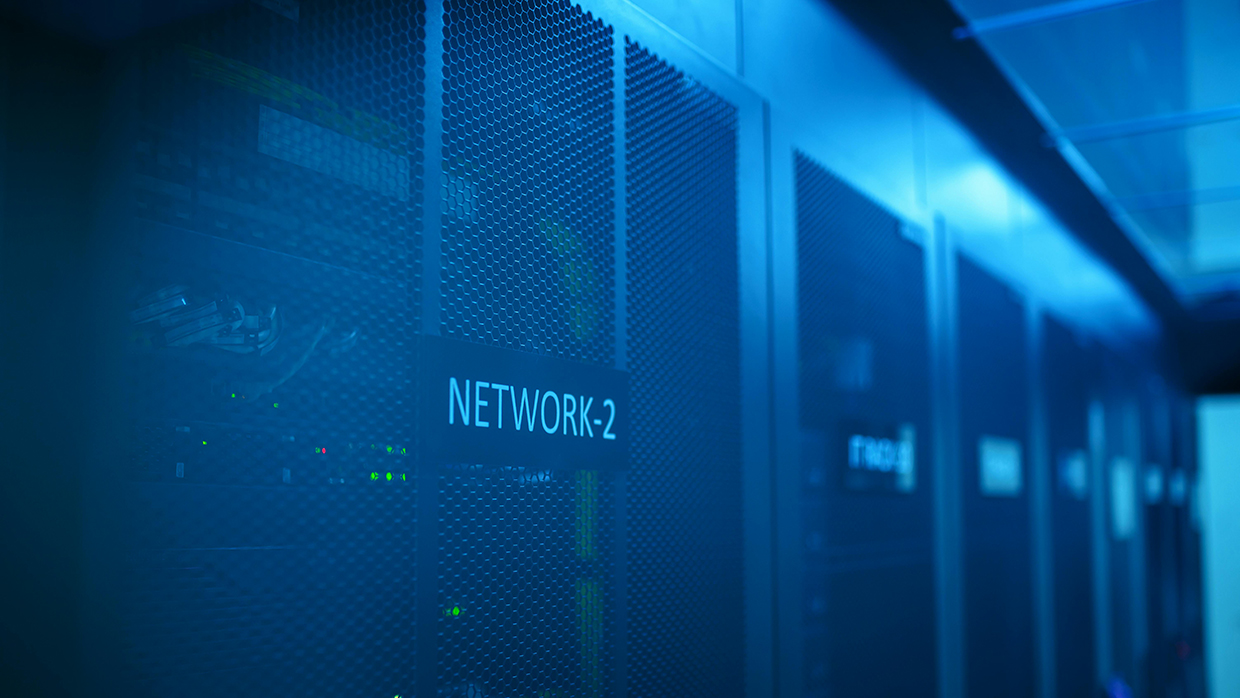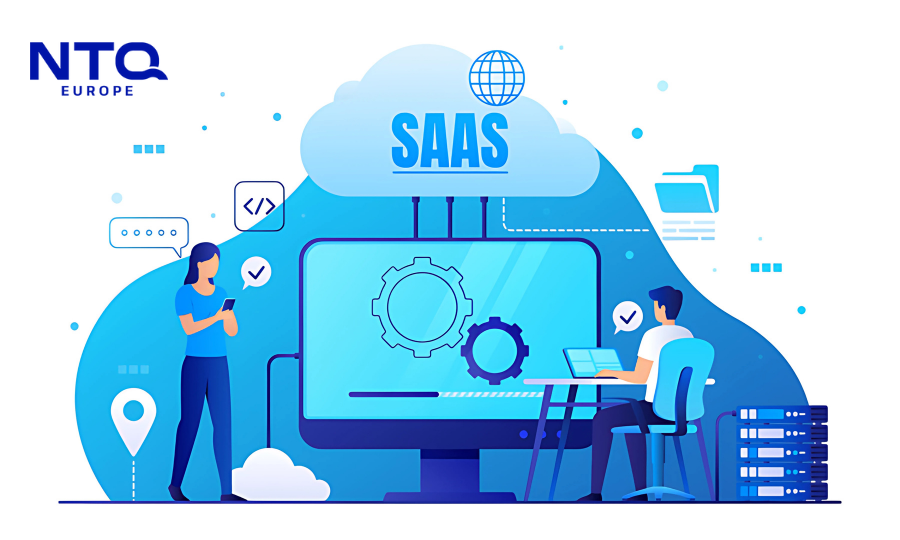1. Introduction to IoT Security
The Internet of Things (IoT) has revolutionized how we interact with the world around us. From smart thermostats and voice-activated assistants in our homes to sophisticated sensor networks in factories and hospitals, IoT devices have become an essential part of modern life. In Europe alone, IoT adoption in sectors like healthcare, energy, and smart manufacturing is growing at an exponential rate.
With this rapid expansion, however, comes a pressing concern: IoT security.
Unlike traditional IT systems, IoT environments are often composed of thousands of heterogeneous devices, each with varying levels of computing power and protection. This creates a wide attack surface that cybercriminals are eager to exploit.

IoT security services refers to the protective measures, strategies, and technologies used to safeguard connected devices and networks in the IoT ecosystem from data breaches, intrusions, and unauthorized control. While cybersecurity typically focuses on securing networks and information systems, IoT cyber security must also account for physical devices, constrained computing environments, and real-time data flows.
The importance of IoT security cannot be overstated. As more devices become connected—especially in critical industries like healthcare and industrial automation—the potential for data compromise or operational disruption grows significantly.
2. Common IoT Security Threats and Vulnerabilities
IoT environments are riddled with both known and unknown IoT security risks, many stemming from basic oversights in development and deployment. Below are the most common threats and IoT security issues:
a. Default Weak Passwords
Many IoT devices ship with default credentials, such as “admin” and “1234”. These are easily exploited by attackers using automated tools.
b. Lack of Data Encryption
A significant number of consumer and industrial IoT devices fail to encrypt sensitive data during transmission. This opens a path for man-in-the-middle attacks and data leakage.
c. Outdated Firmware
One of the biggest IoT security challenges is keeping firmware up to date. Many devices lack a mechanism for remote updates, and users often neglect manual patches. This makes devices vulnerable to exploits that have already been publicly disclosed.
d. Botnet Exploitation
Perhaps the most infamous example is the Mirai botnet attack, which targeted IoT devices with open Telnet ports and default passwords. These infected devices were then weaponized in massive DDoS attacks, crippling websites and infrastructure.
e. Network Infiltration
Compromised IoT devices can act as gateways into broader enterprise or home networks. Once inside, attackers can move laterally to infect or control other systems.
The variety of devices, from baby monitors to industrial sensors, creates an enormous web of endpoints that must be continuously monitored and secured. Without proper IoT network security, a single weak link can bring down an entire system.
3. Key Principles of IoT Security
Securing the IoT ecosystem requires a paradigm shift. Instead of adding security as an afterthought, companies must embrace security by design—embedding protection into every layer of the device lifecycle.
a. Security by Design
Manufacturers must incorporate IoT device security from the very beginning. This includes secure boot processes, tamper-proof hardware, and encrypted communication protocols.
b. Access Management
Strong authentication mechanisms for both users and devices are critical. Multi-factor authentication, device whitelisting, and certificate-based trust chains can significantly reduce unauthorized access.
c. Continuous Firmware and Patch Updates
Implementing secure, over-the-air (OTA) update mechanisms ensures that devices remain protected against evolving threats. Updates must be cryptographically signed to prevent tampering.
d. End-to-End Encryption
Protecting data from the moment it’s generated on a device to its arrival in the cloud or server backend is vital. Using TLS and other cryptographic standards, even constrained devices should be capable of encrypted communication.
Following these principles is essential for organizations looking to deploy a secure and scalable IoT security platform.
4. Best Practices for Enhancing IoT Security
A proactive and layered approach is the most effective way to secure connected environments. Below are best practices that IT teams, manufacturers, and users should follow:
a. Change Default Configurations
Before deployment, ensure all default settings—especially credentials—are changed. Disable unnecessary ports and services.
b. Network Segmentation
Isolate IoT devices from critical infrastructure using VLANs or firewalls. This limits lateral movement if one device is compromised.
c. Use Secure Protocols
Ensure communication between devices and servers uses secure protocols like HTTPS, MQTT with TLS, or CoAP with DTLS. Implement Secure Boot to verify device integrity at startup.
d. Deploy Monitoring and Intrusion Detection
Utilize IDS/IPS systems tailored for IoT to detect unusual patterns, such as devices sending traffic to unknown domains or spiking in bandwidth usage.
These practices are essential components of any modern IoT security solution and help create resilient infrastructure against known and emerging threats.

5. IoT Security Solutions and Tools
The fast-evolving nature of the Internet of Things demands equally advanced security mechanisms. Here’s a breakdown of the most effective IoT security solutions and tools currently available:
a. Specialized IoT Firewalls and Secure Gateways
Unlike traditional firewalls, IoT firewalls are designed to accommodate the unique characteristics of IoT protocols and device behavior. They filter traffic based on custom rules and can block abnormal activities from specific devices.
Secure IoT gateways act as an intermediary between IoT devices and the cloud, enforcing encryption, authentication, and monitoring policies. This helps minimize exposure of individual endpoints to external threats.
b. Mobile Device Management (MDM) for IoT
Modern IoT security platforms integrate MDM-like capabilities to manage fleets of connected devices remotely. These systems provide centralized control for software updates, policy enforcement, and access control—critical for maintaining IoT device security in distributed environments.
c. Blockchain for Data Integrity
Blockchain introduces decentralized, tamper-proof ledgers to track IoT device transactions. It’s especially useful for environments where traceability and transparency are paramount—such as supply chain tracking or smart contracts in IIoT ecosystems.
Blockchain enhances IoT cyber security by eliminating single points of failure, enabling mutual device trust, and ensuring data authenticity across the network.
d. AI and Machine Learning for Threat Detection
Artificial Intelligence (AI) and Machine Learning (ML) are transforming the way organizations approach IoT security testing and anomaly detection. These technologies can:
- Analyze vast volumes of real-time data from IoT devices
- Detect abnormal behavior patterns
- Automatically isolate compromised devices
- Forecast vulnerabilities based on usage trends
AI-driven IoT security services provide scalable and intelligent protection, particularly valuable for large networks with thousands of connected sensors or embedded systems.
6. IoT Security in Industry-Specific Applications
IoT is not confined to a single industry. It powers everything from personalized health monitoring to autonomous manufacturing. Let’s explore how IoT security solutions apply across key sectors:
a. Smart Homes
Smart doorbells, security cameras, and voice assistants make homes more convenient—but also more vulnerable. Cyber attackers can exploit these devices to monitor households or gain access to private networks.
Smart home security involves:
- Encrypting video and audio data streams
- Regularly updating firmware
- Using secure Wi-Fi credentials
- Disabling unused ports and features
b. Healthcare (IoMT – Internet of Medical Things)
Connected medical devices like pacemakers, insulin pumps, and remote patient monitors offer lifesaving benefits. However, they also pose serious risks if compromised. For instance, attackers could alter dosages or steal sensitive patient records.
IoT security in healthcare must comply with strict regulations like GDPR and HIPAA. This includes:
- Encrypting all patient data
- Ensuring secure data transmission to EHR systems
- Deploying network segmentation within hospital IT infrastructure
This vertical has seen rapid investment from IoT security companies seeking to develop resilient solutions tailored for medical environments.
c. Industrial IoT (IIoT)
Industrial IoT security is critical in manufacturing, energy, logistics, and utilities. These environments contain devices like PLCs, SCADA systems, and robotic arms—all of which are essential to core operations.
Key practices include:
- Implementing secure remote access for field engineers
- Monitoring sensors for abnormal behaviors
- Ensuring physical security of connected hardware
- Integrating ICS-specific intrusion detection systems
Successful deployment of industrial IoT security reduces downtime, prevents sabotage, and protects intellectual property.
d. Smart Cities
Cities are becoming smarter with traffic sensors, smart streetlights, and automated water systems. However, without robust IoT network security, such systems could be hijacked—leading to chaos in public services or leaks of citizen data.
Municipalities should work with certified IoT security services to:
- Encrypt all sensor and control data
- Monitor public infrastructure networks
- Implement secure provisioning for new devices
This urban transformation requires alignment with global IoT security standards to ensure safety and interoperability.
7. Challenges in IoT Security Implementation
Despite the growing availability of IoT security solutions, real-world adoption comes with several obstacles:
a. Device Diversity
IoT ecosystems often include thousands of devices running different operating systems, communication protocols, and hardware architectures. This makes it difficult to implement universal security policies or testing strategies.
b. Lack of Standardization
There’s a significant gap in IoT security standards across manufacturers. Without consistent guidelines, many vendors prioritize cost and speed to market over security. This fragmentation increases integration risks and complicates compliance efforts.
c. Cost Constraints
Many consumer-grade IoT devices are manufactured with razor-thin margins. To save on costs, manufacturers often skip advanced IoT security testing, omit secure hardware modules, or forgo OTA update functionality.
d. User Awareness
Even the most secure system can be compromised by human error. Many users lack awareness about proper device configuration, password management, or firmware updates. This human factor remains one of the biggest IoT security risks today.
These challenges emphasize the need for a multi-stakeholder approach, combining regulations, vendor accountability, and public education to create safer connected environments.
8. Future Trends in IoT Security
As the Internet of Things continues to evolve, so do the methods used to secure it. The following trends represent the next phase in IoT cyber security, driving innovation in how we protect billions of connected devices worldwide.
a. Hardware-Based Security Modules
To address security at the physical level, more manufacturers are embedding Trusted Platform Modules (TPMs) and Hardware Security Modules (HSMs) directly into their devices. These components store cryptographic keys securely and ensure device authenticity at boot time.
This hardware-first approach helps prevent tampering and supports IoT device security even if the software stack is compromised.
b. AI-Driven Security Automation
As IoT ecosystems grow in complexity, manual monitoring and rule-based systems become ineffective. The next wave of IoT security platforms leverages AI-based threat detection to automate:
- Risk scoring of devices and connections
- Dynamic policy adjustments based on behaviorSelf-healing systems that isolate infected devices automatically
- This enables a more proactive, scalable, and cost-effective security strategy across thousands or millions of endpoints.
c. Standardization and Regulatory Evolution
To bridge the gap between innovation and protection, global bodies are pushing stronger IoT security standards. For example:
- NIST (National Institute of Standards and Technology) has published detailed guidance for IoT security in federal systems.
- ETSI (European Telecommunications Standards Institute) has outlined cybersecurity requirements for consumer IoT.
- IEEE continues to support interoperability and secure communication standards.
As governments and industry groups coalesce around these frameworks, organizations can expect increased compliance demands—but also more clarity and tools to build secure IoT systems.
d. Identity and Access Management (IAM) at Scale
A significant future focus is device identity management. Rather than managing access through IP addresses, future systems will treat devices like digital citizens—each with verified identities, access rights, and expiration dates.
This zero-trust approach ensures that only authenticated devices can interact with the network, enhancing IoT network security dramatically.
9. IoT Security Services at NTQ Europe – Your Trusted Integration Partner
Securing the Internet of Things isn’t just a technical challenge—it’s a strategic imperative for businesses, governments, and individuals alike. The rise in attacks on connected ecosystems—from consumer smart homes to industrial IoT security systems—underscores the need for robust, layered, and forward-thinking protection mechanisms.
To recap, organizations should:
- Integrate IoT security solutions at the design phase
- Continuously test, monitor, and update devices
- Apply network segmentation and encrypted protocols
- Educate users about their role in maintaining device hygiene
- Leverage AI, blockchain, and modern IAM systems
- Stay aligned with evolving IoT security standards
Investing in security today prevents catastrophic breaches tomorrow. And as the industry matures, partnering with trusted IoT security companies can provide the expertise, tools, and peace of mind needed in a highly connected world.
At NTQ Europe, we understand that in today’s hyper-connected landscape, IoT security isn’t just an option—it’s a foundation for sustainable digital transformation. As a long-standing IT service provider with deep expertise in smart manufacturing, digital healthcare, automotive, and urban infrastructure, we bring tailored IoT security solutions designed to meet the real-world needs of modern businesses.

What We Offer:
- End-to-End IoT Security Consulting: We assess your current IoT environment, identify risks, and build a security roadmap aligned with international compliance standards (GDPR, ISO 27001, HIPAA).
- Security-by-Design Product Development: From embedded firmware hardening to secure OTA updates and encrypted communications, we build IoT systems that are secure from the inside out.
- Custom IoT Security Platforms: Centralized control, secure provisioning, and anomaly detection—powered by AI—ensure visibility across all endpoints, even in large-scale industrial deployments.
- Industry-Specific Protection: Whether you’re protecting remote patient monitoring devices or safeguarding PLCs on a smart production line, our industrial IoT security experts deliver domain-specific solutions that scale with your operation.
- Security Testing & Compliance Audits: We perform comprehensive IoT security testing and penetration assessments to validate resilience against real-world attack vectors.
We don’t offer generic solutions—we co-create secure ecosystems with our clients, making sure your connected products earn the trust of users and partners alike.
Why NTQ Europe?
- Proven Track Record in complex IoT system integration across Europe and APAC
- Compliance-First Approach with deep knowledge of GDPR, HIPAA, HL7, FHIR, and ETSI standards
- Security Expertise Meets Agility, giving you a flexible partner that scales with your business
- End-to-End Delivery: From architecture design to ongoing maintenance and updates
Ready to Secure Your Connected Future?
Whether you’re just beginning your IoT journey or scaling up across multiple verticals, NTQ Europe is your trusted security ally. Let’s build a safer, smarter world—together.
📩 Get in touch today to schedule a free security consultation or explore how our tailored IoT security services can protect your business from the inside out.
👉 Contact NTQ Europe | 💬 Talk to an Expert | 🔐 Build Your Secure IoT Ecosystem



















